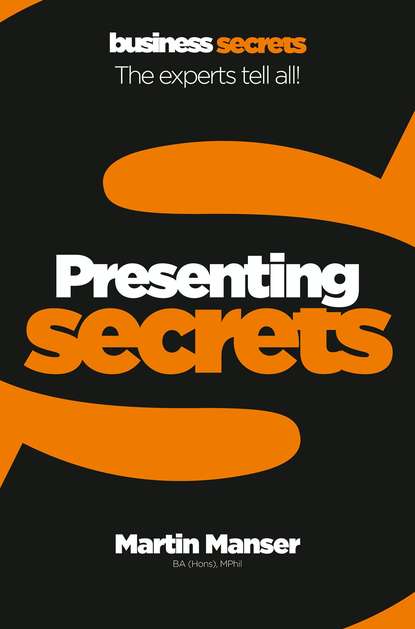По всем вопросам обращайтесь на: info@litportal.ru
(©) 2003-2025.
✖
Presenting
Автор
Год написания книги
2019
Настройки чтения
Размер шрифта
Высота строк
Поля
“What is the hardest task in the world? To think”
Ralph Waldo Emerson, philosopher
• If you get stuck at any point, answer the question words: who, why, where, what, when, how. These will stimulate your thinking.
• At this stage, do not reject any thoughts. (Use an eraser sparingly to delete what you have written.)
• As a next stage you can draw lines to show the links from your central thought to your key words and between individual key words.
• You can colour in different key words to show which ones are related.
• You can number the different key words in order of importance. Later on, as you deal with each aspect in your writing, you can put a line through each one.
As you draw a diagram of your own thoughts, you will probably see a clear structure with key messages beginning to emerge. (If this doesn’t happen, leave the paper for a while and come back to it later.) Aim for between three and five key messages in your presentation. If you have more than five, you risk overloading your audience with too much information.
Time spent thinking creatively is not wasted.
1.6 Organize your thoughts (#ulink_46281e99-53d1-5aa7-b991-dd03fa5efb60)
Spend time focusing on the key messages that you want to give in your presentation. Begin to arrange your key messages in a logical order. Having a clear structure helps your audience follow what you are saying more easily.
There are several different ways in which you can arrange the information that you want to present. You need to choose the best approach, depending on your audience. If you are unsure which way to adopt, discuss it with a colleague.
1 Move from facts to a conclusion. The audience listens to your presentation of the facts and they are led to a conclusion. If you follow this approach, the audience may have to think hard to follow your logic.
2 Start with a conclusion, then see how that conclusion is supported by certain facts and arguments. This is usually easier for audiences to follow than 1.
“Everyone gets so much information all day long that they lose their common sense”
Gertrude Stein, writer
3 Persuade people to adopt a point of view, by giving different sides of an argument. Begin by stating your opinion, then give the arguments for and against that opinion and finally draw conclusions from what you have said.
4 Give a list of options. Begin by stating a particular situation and then present the various possible solutions, with their advantages and disadvantages. Finally, outline the next possible steps.
5 Explain a process. Begin by stating how many steps are involved in the process. Say how each different stage works, with its end result. Summarize often. Often, a diagram will help clarify the different stages.
6 Include clear signposts of the route of your presentation. For example, “To start with; I will describe two different kinds of problem; on the one hand…, on the other…”.
Spend time focusing on your key messages.
1.7 Research carefully (#ulink_3c4eb1fd-7ffc-59e8-9cb8-28c1f88fa4e8)
Inject your presentation with supporting evidence that will reinforce your key messages. Use a range of sources to investigate your subject. You might not use all the information you collect, but you will have thought through different issues.
Sources of information include:
• Data and statistics.
• The Internet. E.g. Wikipedia or www.Credoreference.com
• Libraries. In our digital age, it is easy to ignore the valuable hard-copy resources of libraries that have been built up over the years. Librarians themselves also have a wealth of knowledge at their fingertips and will be able to point you in the right direction. Reference sections of
case study I was once given just three hours’ notice to give a 45-minute presentation, and that included breakfast and travelling to the venue! Fortunately, the subject was close to my heart. I’d kept notes on treatments of similar subjects and could find them easily. I used a colleague’s outline and structure as a basis and added my own personal anecdotes and approach. The keys to success were mental prepararation and being able to access vital information quickly.
libraries are an obvious source of information, while some people find that even a children’s book on a subject provides a useful overview.
If you give many presentations, then it can be useful to keep an ideas book, either physically or digitally, of interesting items that could help you. Such items could include:
• Newspaper cuttings
• Extracts from journals or magazines
• Illustrations that are particularly striking
• Titles of books
• Quotations from public figures or leaders in your field
• Witty anecdotes
• Extracts you come across in your general reading
• Insightful comments in a blog
In your preparation be willing to think outside the box. Explore different perceptions of a sensitive issue. Distinguish between facts and opinions. Question well-known arguments. Go beyond face value.
Inject strong supporting evidence into your presentation to reinforce your message.
1.8 Look at your venue (#ulink_c7bb6811-a2ea-51d2-a4b9-4f125b027938)
We’ve all known times when a good presentation has been spoilt by poor attention to practical details, for example when the speaker arrives late or speaks for too long. Do your best to make sure that nothing can go wrong. When thinking about your presentation, consider the details of the venue.
You need to think about the practical details of where you are physically going to give your presentation.
• How will you reach the venue in good time? If you don’t know the location of where you are speaking, work out how you are going to get there. Check the location on a map or check the postcode for your
case study Sarah once led a two-day seminar in Chicago. She booked into the hotel the evening before the first day and in the morning rang for a taxi to take her to the venue of the seminar. The taxi turned up fine and the first day of the course went well. She thought the same would happen the second day but she hadn’t reckoned with the weather. On the morning of the second day it was raining heavily and all the taxis were busy already. She eventually arrived very late for the seminar – even at the point when some of the delegates were wondering if she’d ever arrive at all. The lesson: now she always books a taxi the evening before a presentation.
satellite-navigation system. Find out what the car-parking facilities are. If you are travelling by train, check the railway timetable and where necessary book a taxi to take you from the railway station to the venue. Time spent on these matters in advance helps you feel more in control and prepared for possible delays or other unforeseen eventualities.
• Think through the arrangements at the venue. Who will meet you, where and at what time? Remember to allow sufficient time from arriving at the venue to when you are scheduled to begin your presentation, to allow time to freshen up.
• Check the lighting of the room. If possible, give your presentation in a room that has natural light.
• Consider the ventilation of the room If the air in the room is too hot and stuffy, your audience will become drowsy. On the other hand, you don’t want people to become cold. Check how to operate any airconditioning or heating systems.
Make sure your presentation is not spoilt by poor attention to the practicalities set by the venue.












